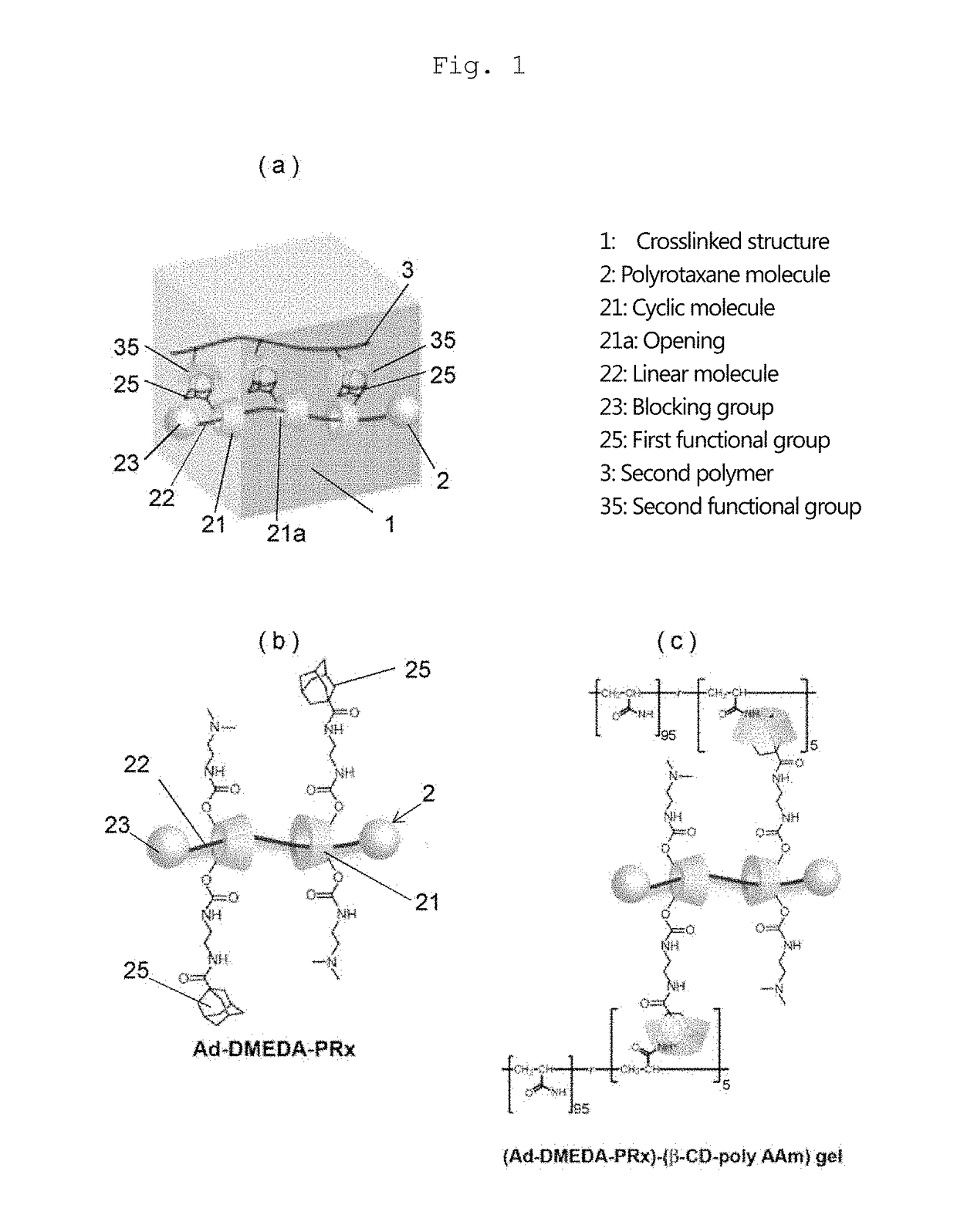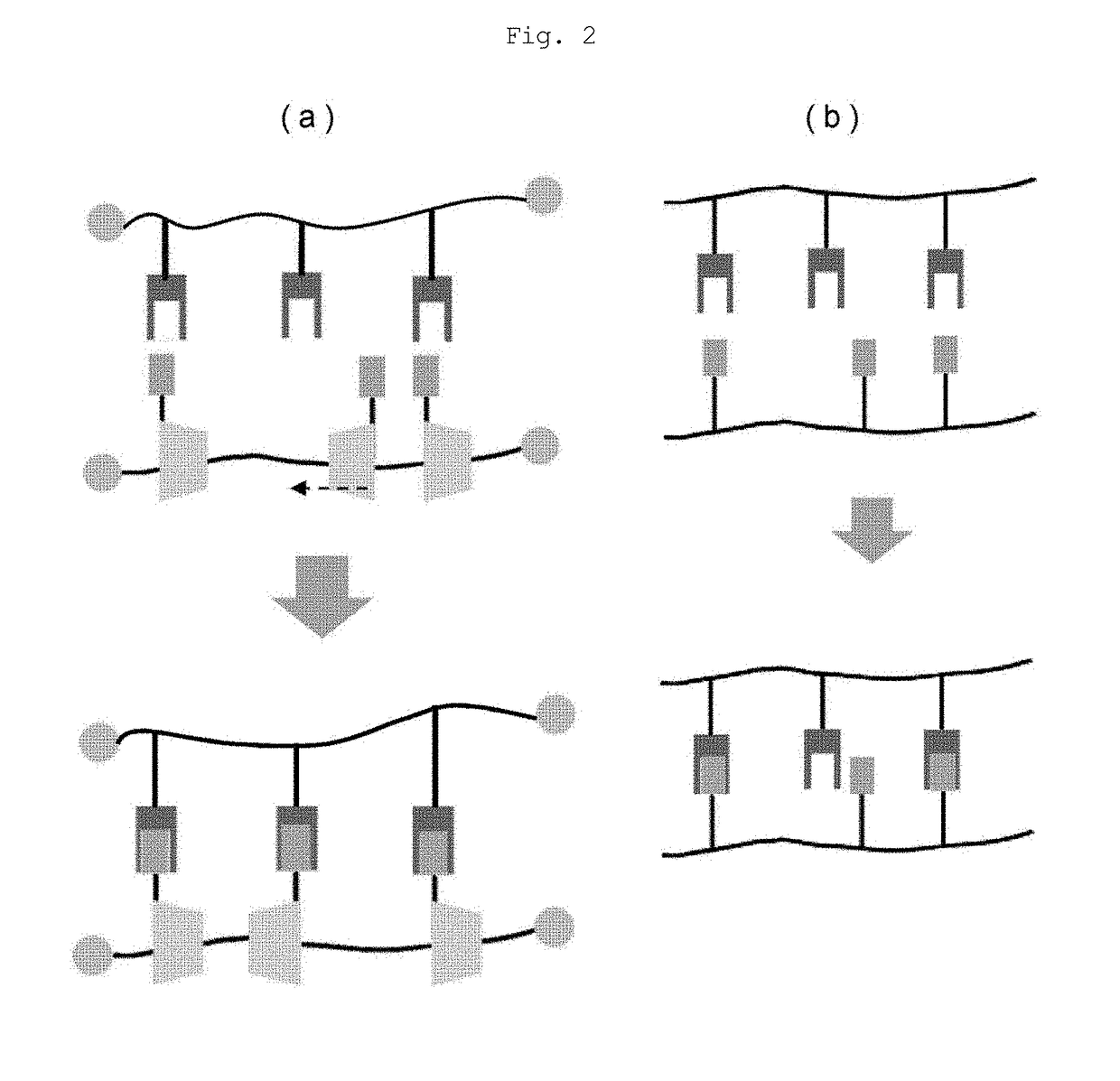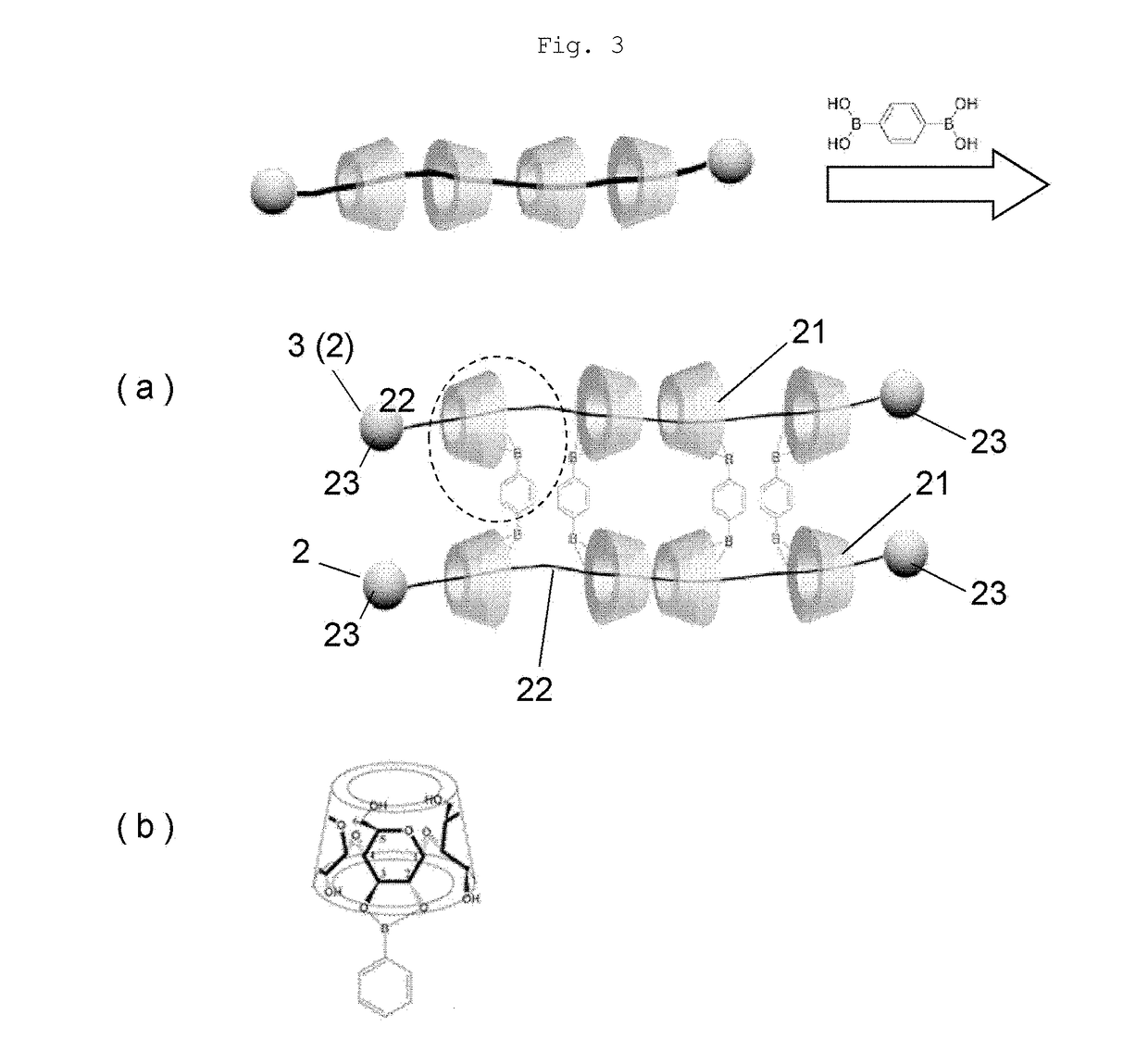Self-restoring macromolecular material and production method for same
a macromolecular material and self-restoration technology, applied in the field of self-restoration macromolecular material and a production method, can solve the problems of material damage, difficult self-restoration, and inability to bond back to the original state (rebonding), and achieve excellent stress relaxation and reduce the loss of material properties after restoration.
- Summary
- Abstract
- Description
- Claims
- Application Information
AI Technical Summary
Benefits of technology
Problems solved by technology
Method used
Image
Examples
first embodiment
Macromolecular Material of the First Embodiment
[0060]FIG. 1 is a schematic illustration showing a macromolecular material according to the first embodiment. FIG. 1(a) is a schematic diagram of the macromolecular material according to the first embodiment. FIG. 1(b) is a schematic diagram of the chemical structure of a polyrotaxane molecule in the macromolecular material. FIG. 1(c) is a schematic diagram of the chemical structure of the macromolecular material according to the first embodiment. The macromolecular material is described below with reference to FIG. 1.
[0061]The macromolecular material according to the first embodiment comprises a crosslinked structure 1. The crosslinked structure 1 is formed by crosslinking a polymer containing a polyrotaxane molecule 2. More specifically, a polyrotaxane molecule 2 and a polymer molecule other than the polyrotaxane molecule are crosslinked via a reversible bond to form a crosslinked structure 1. The “polymer molecule” is hereinafter ref...
second embodiment
Macromolecular Material of the Second Embodiment
[0133]FIG. 3(a) is a schematic illustration showing the macromolecular material according to another embodiment (the second embodiment). FIG. 3(b) is an enlarged schematic diagram showing the portion of FIG. 3(a) enclosed in the dashed circle.
[0134]The macromolecular material of the second embodiment comprises a crosslinked structure 1. As in the macromolecular material according to the first embodiment, the crosslinked structure 1 is configured such that a polyrotaxane molecule 2 and a second polymer 3, which is a polymer molecule other than the polyrotaxane molecule 2, are crosslinked via a reversible bond.
[0135]The crosslinked structure 1 according to this embodiment is such that crosslinking is formed by bonding a polyrotaxane molecule 2 (this polyrotaxane molecule 2 is hereinafter referred to as “the first polyrotaxane molecule 2”) to a second polymer 3 via a boronic acid derivative. The cyclic molecule 21 of the first polyrotaxan...
synthesis example 2
[0169]Polyrotaxane comprising polyethylene glycol passing through multiple α-cyclodextrins with both ends of the polyethylene glycol being capped (blocked) with adamantane groups (hereinafter abbreviated as “PRx2”) was synthesized according to Synthetic Schemes 2 to 6.
[0170]Polyethylene glycol (PEG, Mw=35000, 30.2 g, 0.857 mmol) and triethylamine (TEA, 0.952 g, 9.43 mmol) were dissolved in 500 mL of dichloromethane (DCM) while cooling with ice. After methanesulfonyl chloride (MsCl, 0.981 g) was added, the resulting mixture was returned to room temperature and stirred for 24 hours. When this mixture was separated into phases by adding 300 mL of H2O, an emulsion was formed. Accordingly, the emulsion was filtered through celite and the filtrate was separated into phases again. Subsequently, the filtrate was separated into phases by adding 300 mL of brine, followed by drying over Na2SO4. After filtration, the filtrate was reprecipitated into diethyl ether and the precipitate was collect...
PUM
| Property | Measurement | Unit |
|---|---|---|
| temperature | aaaaa | aaaaa |
| half-life temperature | aaaaa | aaaaa |
| half-life temperature | aaaaa | aaaaa |
Abstract
Description
Claims
Application Information
 Login to View More
Login to View More - R&D
- Intellectual Property
- Life Sciences
- Materials
- Tech Scout
- Unparalleled Data Quality
- Higher Quality Content
- 60% Fewer Hallucinations
Browse by: Latest US Patents, China's latest patents, Technical Efficacy Thesaurus, Application Domain, Technology Topic, Popular Technical Reports.
© 2025 PatSnap. All rights reserved.Legal|Privacy policy|Modern Slavery Act Transparency Statement|Sitemap|About US| Contact US: help@patsnap.com



